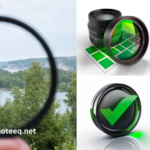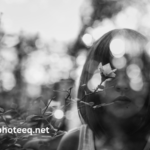Welcome to Photeeq Wildlife Photography, where we specialize in capturing the beauty and wonder of the natural world. With our passion for wildlife and expertise in photography, we strive to create stunning images that evoke emotions and inspire conservation efforts.
At Photeeq, we believe that wildlife photography is not just about taking pictures; it’s about telling a story. Through our lens, we aim to share the unique moments we’ve witnessed in the animal kingdom, showcasing the intricacies of wildlife behavior and the delicate balance of nature. Whether it’s a majestic lion in the savannah or a tiny hummingbird in flight, we strive to capture the essence of each subject, allowing viewers to connect with the incredible diversity of life on Earth.
Tips for Capturing Stunning Wildlife Photos
To capture breathtaking wildlife photos, it’s essential to be prepared and patient. Here are some tips to help you on your journey to becoming a skilled wildlife photographer:
- Research and Observe: Before heading out into the field, take the time to research your subject. Learn about its behavior, habitat, and movement patterns. This knowledge will enable you to anticipate moments and capture them at the right time. Spending time observing wildlife in their natural environment will also give you a deeper understanding of their habits and help you create more compelling images.
- Use the Right Equipment: Wildlife photography often requires specialized gear. Invest in a telephoto lens with a long focal length to bring distant subjects closer. A sturdy tripod and a camera with a fast autofocus system are also essential for capturing sharp, detailed images. Additionally, consider carrying a bean bag or a camouflage cover to stabilize your equipment and blend into the surroundings.
- Composition and Lighting: Pay attention to the composition of your shots. Use the rule of thirds, leading lines, and framing techniques to create visually appealing images. Experiment with different angles and perspectives to add depth and dimension to your photos. Moreover, make the most of natural lighting conditions. Golden hours, early morning, and late afternoon, provide warm, soft light that enhances the beauty of wildlife subjects.
Equipment Needed for Wildlife Photography
To capture stunning wildlife photos, you need the right equipment. Here’s a list of essential gear every wildlife photographer should have:
- Telephoto Lens: A telephoto lens with a long focal length is crucial for wildlife photography. It allows you to bring distant subjects closer and capture detailed shots without disturbing the animals.
- Camera Body: Invest in a camera body that offers a fast autofocus system, high ISO performance, and good image quality. Look for a model that can handle challenging lighting conditions and has a high burst rate for capturing fast-moving subjects.
- Tripod: A sturdy tripod is essential for keeping your camera steady and reducing blur, especially when using a long telephoto lens. Look for a tripod that is lightweight, portable, and durable.
- Bean Bag or Camouflage Cover: To stabilize your equipment and blend into the surroundings, consider carrying a bean bag or a camouflage cover. These accessories can help you get closer to wildlife without disturbing them.
- Memory Cards and Batteries: Wildlife photography often involves long hours in the field. Make sure to carry extra memory cards and batteries to avoid running out of storage or power.
Remember, investing in quality equipment will enhance your photography experience and allow you to capture the best possible images.
Best Locations for Wildlife Photography
The world is full of incredible destinations for wildlife photography. Here are some of the best locations that offer excellent opportunities to capture stunning wildlife photos:
- Maasai Mara, Kenya: Known for the annual wildebeest migration, Maasai Mara is a wildlife photographer’s paradise. Here, you can witness dramatic river crossings, lion prides, and a diverse range of African wildlife.
- Galapagos Islands, Ecuador: The Galapagos Islands are home to unique and diverse wildlife, including giant tortoises, marine iguanas, and blue-footed boobies. With their fearless nature, the animals provide fantastic photo opportunities.
- Svalbard, Norway: Svalbard, located in the Arctic Circle, offers the chance to photograph iconic Arctic wildlife such as polar bears, Arctic foxes, walruses, and whales. The stunning landscapes of ice and snow provide a breathtaking backdrop.
- Yala National Park, Sri Lanka: Yala National Park is renowned for its leopard population, making it an ideal destination for capturing these elusive cats in their natural habitat. The park is also home to elephants, sloth bears, and a variety of bird species.
- Pantanal, Brazil: The Pantanal wetlands in Brazil are one of the best places in the world to photograph jaguars. This vast ecosystem is also teeming with caimans, giant otters, and a myriad of bird species.
Ethical Considerations in Wildlife Photography
As wildlife photographers, it’s our responsibility to prioritize the well-being of the animals we photograph and respect their natural habitats. Here are some ethical considerations to keep in mind:
- Do Not Disturb: Avoid disturbing or interfering with wildlife. Keep a safe distance and use telephoto lenses to capture close-up shots without intruding on their space.
- Follow Local Regulations: Research and adhere to local regulations and guidelines regarding wildlife photography. Respect restricted areas and nesting grounds, and never feed or bait animals to attract them for a photo.
- Leave No Trace: Minimize your impact on the environment by practicing leave no trace principles. Avoid littering, stay on designated paths, and do not disturb or remove any plants or natural elements.
- Educate and Inspire: Use your photographs as a tool to educate and inspire conservation efforts. Share the stories behind your images, raise awareness about the importance of protecting wildlife, and support organizations that work towards wildlife conservation.
Editing and Post-Processing Techniques for Wildlife Photos
Editing and post-processing are crucial steps in wildlife photography to bring out the best in your images. Here are some techniques to enhance your wildlife photos:
- Cropping: Crop your images to improve composition and remove distractions. Focus on the main subject and eliminate any elements that may detract from the overall impact.
- Adjust Exposure and Contrast: Use exposure and contrast adjustments to fine-tune the lighting in your photos. Highlight the details in shadows and recover blown-out highlights for a well-balanced image.
- Sharpening and Noise Reduction: Apply selective sharpening to enhance the details in your subject while minimizing noise. Use noise reduction tools to reduce graininess in low-light or high ISO images.
- Color Correction and White Balance: Adjust the color balance and white balance to achieve accurate and natural-looking colors. This step is especially important when photographing animals with unique fur, feathers, or scales.
- Selective Editing: Use selective editing tools to enhance specific areas of your image. Brighten the eyes of a bird, enhance the texture of an animal’s fur, or emphasize the vibrancy of a flower.
Experiment with different editing techniques while maintaining a natural and authentic representation of the wildlife you’ve photographed. Remember, the goal is to enhance the image, not alter it beyond recognition.
Showcasing Photeeq Wildlife Photography’s Portfolio
At Photeeq Wildlife Photography, we take pride in our diverse portfolio of wildlife images. From the vast landscapes of Africa to the frozen realms of the Arctic, our photographs capture the essence of the animal kingdom. Through our lens, we aim to evoke emotions, spark curiosity, and inspire conservation efforts.
Visit our website to explore our portfolio and witness the breathtaking beauty of wildlife through our eyes. Each image tells a unique story, showcasing the wonders of the natural world and reminding us of the importance of preserving our planet’s biodiversity.
Conclusion
Wildlife photography is a powerful medium that allows us to connect with nature and appreciate the incredible diversity of life on Earth. Through careful observation, patience, and ethical practices, we can capture stunning images that tell compelling stories and inspire conservation efforts.
Whether you’re an aspiring wildlife photographer or simply an admirer of the natural world, Photeeq Wildlife Photography is here to share our passion and expertise. Visit our website today to explore our portfolio and join us in celebrating the beauty of wildlife through the art of photography.







